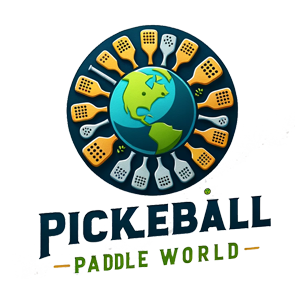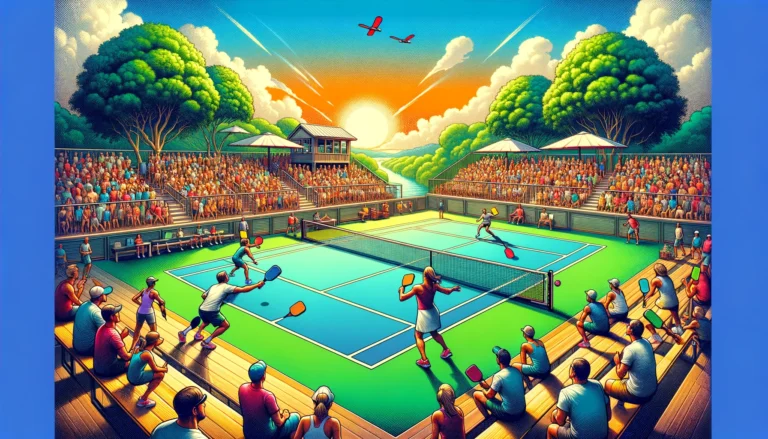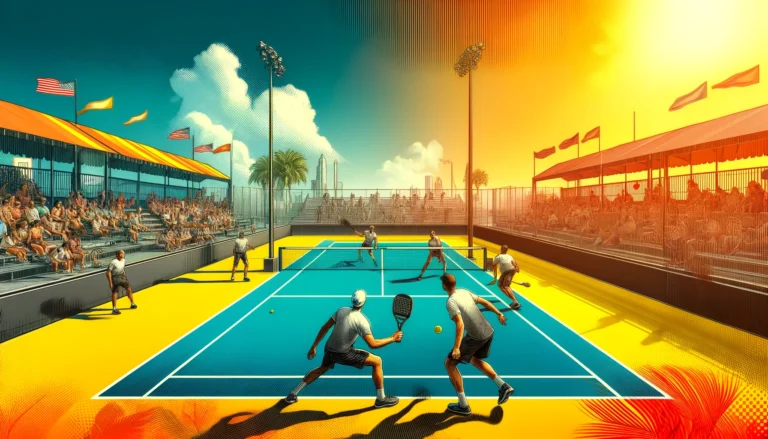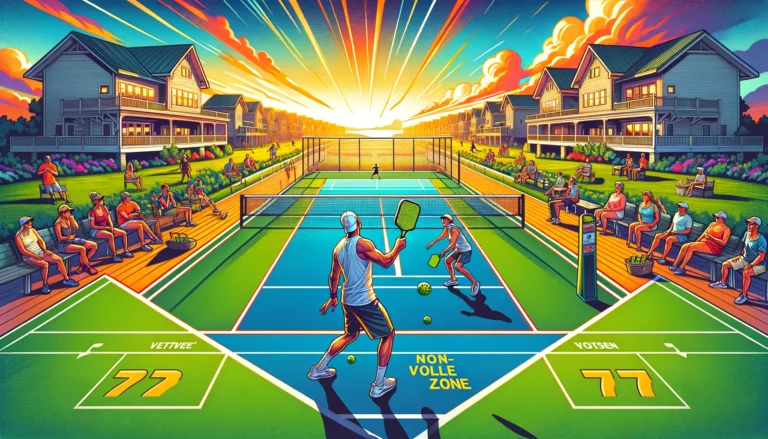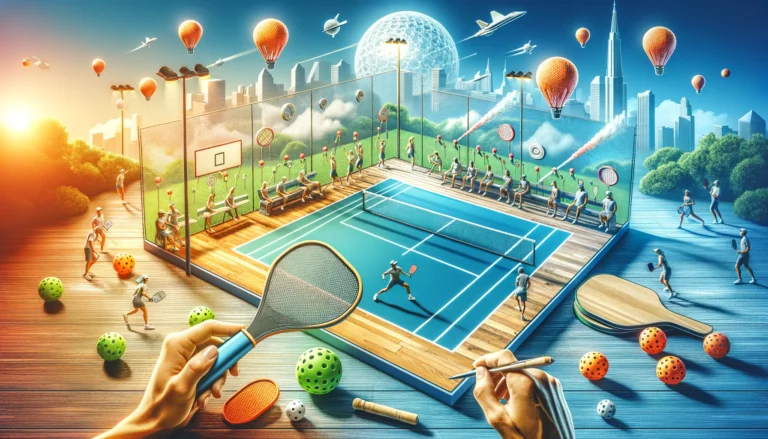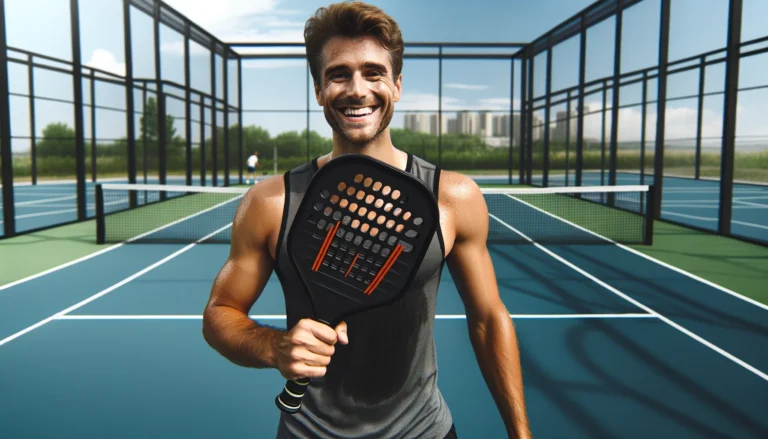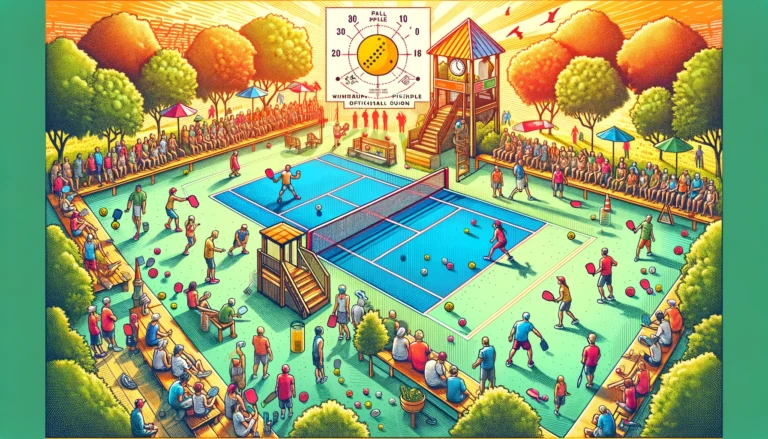The Ultimate Guide to Mastering the Pickleball Zone
Pickleball Zone
Pickleball is one of the fastest-growing sports in the world, offering a unique blend of elements from tennis, badminton, and ping-pong. Whether you’re a seasoned athlete or new to the game, understanding the pickleball zone is crucial for enhancing your skills and performance on the court. In this guide,
We’ll explore the key aspects of the pickleball zone, providing insights and tips to help you excel.
This blog will cover various topics related to the pickleball zone, including strategies for positioning, techniques for maintaining control, and tips for improving your overall game.
We’ll also delve into common mistakes and how to avoid them, ensuring you have a comprehensive understanding of this essential aspect of pickleball.
By the end of this post, you’ll have a deeper knowledge of the pickleball zone and how to use it to your advantage.
Whether you’re looking to dominate your local league or just enjoy a fun game with friends, mastering the pickleball zone will elevate your play and increase your enjoyment of the sport.
Understanding the Pickleball Zone
What is the Pickleball Zone?
The pickleball zone refers to the strategic areas on the court where players position themselves to maximize their effectiveness.
Understanding these zones helps players anticipate their opponents’ moves and react more swiftly. The most critical zone in pickleball is the non-volley zone, often referred to as “the kitchen.”
The non-volley zone extends seven feet on either side of the net. Players must avoid volleying the ball in this area, making it a strategic spot for drop shots and dink plays. Mastering the non-volley zone can significantly improve your defensive and offensive strategies.
Other zones include the baseline, where players often serve and return shots, and the mid-court, which serves as a transitional area.
Understanding these zones and how to maneuver within them is essential for effective play.
Positioning Within the Pickleball Zone
Proper positioning within the pickleball zone is vital for controlling the game. Players should aim to maintain a balanced stance, ready to move quickly in any direction. When at the baseline, position yourself slightly behind the line to ensure you can reach deep shots while being prepared to advance to the net.
In the non-volley zone, players should stay on their toes, ready to pivot and react to their opponent’s shots. Maintaining a low center of gravity and keeping your paddle up will help you respond to fast volleys and dinks effectively.
Understanding when to transition between zones is also crucial. For instance, moving from the baseline to the non-volley zone requires quick, decisive steps to avoid getting caught in the mid-court, where you’re more vulnerable to your opponent’s shots.
Techniques for Maintaining Control in the Pickleball Zone
Maintaining control in the pickleball zone involves a combination of proper positioning, anticipation, and technique.
One effective strategy is to use dinks and drop shots to keep your opponent off balance. By targeting the non-volley zone, you can force your opponent to make difficult returns.
Another key technique is to maintain a consistent rally rhythm. This means hitting the ball with controlled power and accuracy, making it difficult for your opponent to predict your next move.
Practicing your serves, volleys, and groundstrokes will help you develop this consistency.
Finally, effective communication with your partner is essential in doubles play. Clearly calling shots and coordinating your movements will help you maintain control of the court and prevent errors.
Common Mistakes in the Pickleball Zone and How to Avoid Them
Overextending in the Non-Volley Zone
One of the most common mistakes players make in the pickleball zone is overextending in the non-volley zone. This often happens when players reach too far forward, leaving them off balance and unable to react quickly to their opponent’s shots.
To avoid this, focus on maintaining a stable stance within the non-volley zone. Bend your knees slightly and keep your paddle up, ready to react. Practicing your footwork and positioning will help you stay balanced and agile.
Poor Transitioning Between Zones
Another common mistake is poor transitioning between zones. This can occur when players move too slowly or hesitantly from the baseline to the non-volley zone, leaving them vulnerable to attacks.
To improve your transitions, practice quick, decisive movements. Focus on taking small, rapid steps rather than long strides, which can throw you off balance. Drills that simulate game situations will help you develop this skill and build muscle memory.
Lack of Communication in Doubles Play
In doubles play, lack of communication can lead to confusion and missed shots. This is especially critical in the pickleball zone, where coordination with your partner is essential for effective defense and offense.
To avoid this, establish clear communication habits with your partner. Use verbal cues and hand signals to indicate who will take each shot. Regular practice together will help you develop a strong sense of teamwork and anticipation.
Advanced Strategies for Dominating the Pickleball Zone
The Art of the Dink
The dink is a soft shot that lands in the non-volley zone, forcing your opponent to move forward and hit the ball upwards. Mastering this technique can give you a significant advantage, as it disrupts your opponent’s rhythm and creates opportunities for offensive shots.
To execute a perfect dink, focus on using a gentle touch with your paddle. Aim to place the ball just over the net, making it difficult for your opponent to reach without stepping into the non-volley zone. Practicing this shot from various positions on the court will help you develop precision and control.
Drop Shots and Lobs
Drop shots and lobs are other effective strategies for dominating the pickleball zone. A well-placed drop shot can catch your opponent off guard, especially if they are positioned at the baseline. Conversely, a lob can push your opponent back, giving you time to move forward and take control of the net.
When performing a drop shot, use a short, controlled swing to lightly tap the ball over the net. For lobs, focus on hitting the ball with enough height and depth to clear your opponent’s reach. Practicing these shots will enhance your versatility and keep your opponent guessing.
Controlling the Pace of the Game
Controlling the pace of the game is crucial for maintaining dominance in the pickleball zone. By varying the speed and spin of your shots, you can disrupt your opponent’s timing and force errors. Mixing fast, powerful shots with slower, more controlled ones will keep your opponent off balance and on the defensive.
To develop this skill, practice different shot types and speeds during drills. Experiment with topspin, backspin, and flat shots to see how they affect your opponent’s returns. The more comfortable you become with varying your pace, the more effective you’ll be in controlling the game.
The Psychological Aspect of the Pickleball Zone
Staying Focused Under Pressure
The psychological aspect of pickleball is just as important as the physical. Staying focused under pressure is essential for maintaining control in the pickleball zone. This means staying calm and composed, even when the game is on the line.
To improve your mental game, practice mindfulness techniques such as deep breathing and visualization. These can help you stay present and focused during high-pressure situations. Additionally, developing a pre-game routine can help you get into the right mindset before matches.
Reading Your Opponent
Reading your opponent is a crucial skill for mastering the pickleball zone. By observing their movements and tendencies, you can anticipate their shots and react more quickly. Pay attention to their body language, footwork, and paddle position to gain insights into their next move.
Practicing with different opponents will help you develop this skill. The more you play, the better you’ll become at recognizing patterns and predicting your opponent’s actions. This will give you a significant advantage and allow you to stay one step ahead.
Building Confidence Through Practice
Confidence is key to success in the pickleball zone. The more you practice, the more confident you’ll become in your abilities. Focus on developing a strong foundation of skills through regular practice and drills. This will not only improve your technique but also boost your confidence on the court.
Set specific goals for each practice session, such as improving your dink shots or mastering your footwork. Tracking your progress and celebrating your achievements will help you stay motivated and confident in your abilities.
Last Words
Mastering the pickleball zone is essential for elevating your game and enjoying the sport to its fullest. By understanding the key areas of the court, positioning yourself effectively, and employing advanced strategies, you can dominate your opponents and enhance your performance.
Remember to stay focused, communicate effectively with your partner, and practice regularly to build confidence and skill. With dedication and practice, you’ll become a formidable player in the pickleball zone.
